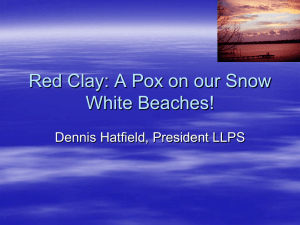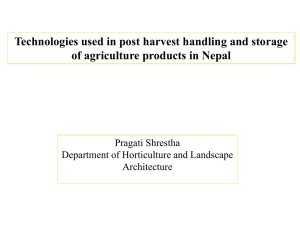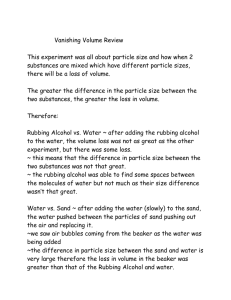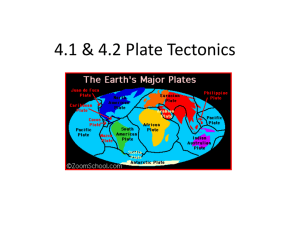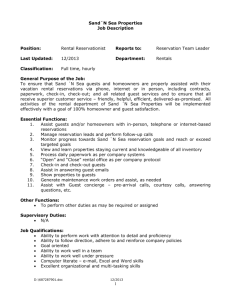The oceans are global in extent, and their waters flow in vast current
advertisement
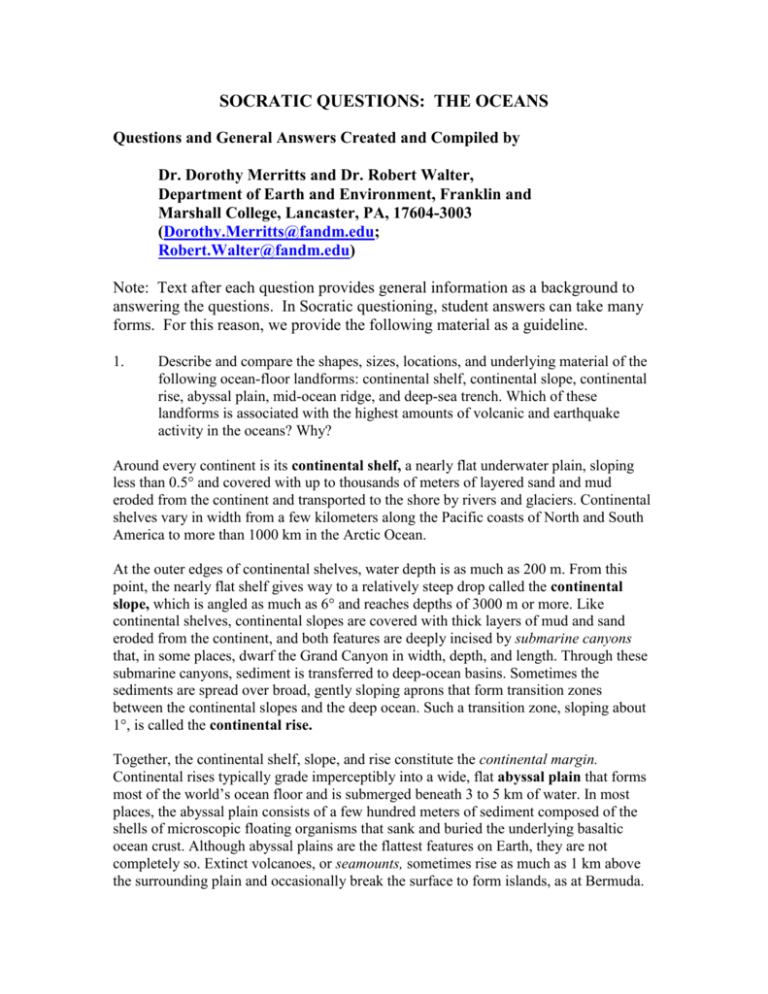
SOCRATIC QUESTIONS: THE OCEANS Questions and General Answers Created and Compiled by Dr. Dorothy Merritts and Dr. Robert Walter, Department of Earth and Environment, Franklin and Marshall College, Lancaster, PA, 17604-3003 (Dorothy.Merritts@fandm.edu; Robert.Walter@fandm.edu) Note: Text after each question provides general information as a background to answering the questions. In Socratic questioning, student answers can take many forms. For this reason, we provide the following material as a guideline. 1. Describe and compare the shapes, sizes, locations, and underlying material of the following ocean-floor landforms: continental shelf, continental slope, continental rise, abyssal plain, mid-ocean ridge, and deep-sea trench. Which of these landforms is associated with the highest amounts of volcanic and earthquake activity in the oceans? Why? Around every continent is its continental shelf, a nearly flat underwater plain, sloping less than 0.5° and covered with up to thousands of meters of layered sand and mud eroded from the continent and transported to the shore by rivers and glaciers. Continental shelves vary in width from a few kilometers along the Pacific coasts of North and South America to more than 1000 km in the Arctic Ocean. At the outer edges of continental shelves, water depth is as much as 200 m. From this point, the nearly flat shelf gives way to a relatively steep drop called the continental slope, which is angled as much as 6° and reaches depths of 3000 m or more. Like continental shelves, continental slopes are covered with thick layers of mud and sand eroded from the continent, and both features are deeply incised by submarine canyons that, in some places, dwarf the Grand Canyon in width, depth, and length. Through these submarine canyons, sediment is transferred to deep-ocean basins. Sometimes the sediments are spread over broad, gently sloping aprons that form transition zones between the continental slopes and the deep ocean. Such a transition zone, sloping about 1°, is called the continental rise. Together, the continental shelf, slope, and rise constitute the continental margin. Continental rises typically grade imperceptibly into a wide, flat abyssal plain that forms most of the world’s ocean floor and is submerged beneath 3 to 5 km of water. In most places, the abyssal plain consists of a few hundred meters of sediment composed of the shells of microscopic floating organisms that sank and buried the underlying basaltic ocean crust. Although abyssal plains are the flattest features on Earth, they are not completely so. Extinct volcanoes, or seamounts, sometimes rise as much as 1 km above the surrounding plain and occasionally break the surface to form islands, as at Bermuda. The most striking landforms of the ocean floor are the mid-ocean ridges and deep-sea trenches. Mid-ocean ridges are submarine volcanic mountain ranges. They form the longest, most nearly continuous mountain belt on Earth, extending over 60,000 km and covering nearly one-third of the ocean floor. Mid-ocean ridges form along divergent plate boundaries, where magma wells up between separating plates and solidifies into new oceanic crust along the ridge crest. As new crust solidifies, it also is broken apart, or rifted, by tectonic forces that cause seafloor spreading. Rift valleys 1 to 20 km wide form along the crests of mid-ocean ridges. Mid-ocean ridges are the sites of greatest volcanic and earthquake activity on the seafloor. Substantial earthquake activity also occurs at deep-sea trenches—long, narrow depressions at convergent boundaries, where an oceanic plate is subducted beneath a plate of lesser density. There are deep-sea trenches off the western coasts of South and Central America, along the North American Plate from California to Alaska, and adjacent to chains of volcanic islands in the northern and western Pacific Ocean, including the Aleutian, Japanese, Philippine, and Indonesian islands. The bottom of the deepest trench on Earth, the Mariana trench in the western Pacific Ocean, is 11.04 km below sea level. 2. How do plate tectonics and climate change affect sea level? If sea level were to rise 10 cm in the 21st century, what might be the cause(s)? How would you assess the plausibility of your hypotheses? Tectonic Controls on Sea Level Much of the long-term drop in sea level over the past 100 million years can be attributed to tectonic factors. Rates of seafloor spreading during the Cretaceous were as much as 50% higher than at present, and greater output of CO2 from spreading ridges might have contributed to Cretaceous hothouse conditions. Faster rates of spreading also produce wider, higher-elevation ridges that displace more water than slower spreading ridges, which are narrower and lower. The globally averaged decrease in spreading rates since about 80 Myr ago is estimated to be sufficient to lower sea level by about 200 to 300 meters. Another tectonic factor, the collision of two continental plates, affects the net area of ocean versus continental crust. Collision between India and Asia that began about 55 Myr ago has caused a thickening of continental crust along multiple reverse faults as the two plates converge, with a corresponding net loss in continental area. This collision is the only major one to occur in the past 100 Myr, and has enlarged the net area of the ocean basins. Imagine pouring the water from a tall narrow glass into a wider-mouthed glass. The water would fill to a lower level. This tectonic control on sea level is estimated to have caused a drop of about 40 m in global sea level since collision began. Climatic Controls on Sea Level In the past few tens of millions of years, other factors have contributed to the long-term decline in sea level. One of these is the storage of water in ice sheets and other ice masses on continents. No ice sheets existed during the hothouse conditions of Cretaceous time, but today ice sheets on Antarctica and Greenland are up to several kilometers thick and cover thousands of square kilometers in area. The East Antarctic ice sheet, which began to form about 35 Myr ago and was well-established by 13 Myr ago, contains the equivalent of a layer of seawater about 65 m thick. The smaller West Antarctic ice sheet began to form sometime between 20 and 9 Myr ago, and has been a permanent feature most of the time since about 4.8 Myr ago. It contains another 4 to 6 m of seawater equivalent. The Greenland ice sheet formed between 7 and 3 Myr ago, and holds another ~6 to 7 m, bringing the total amount of seawater equivalent currently stored in ice sheets to almost 80 m. Another climatically-induced phenomena can affect sea level, although at a lesser magnitude. Water thermally expands and contracts as it changes temperature, occupying more or less space, respectively. As discussed below, global warming is causing a slight rise in sea level, on the order of meters per millennia as seawater heats and expands. Over longer time scales, since the Cretaceous hothouse conditions, both surface water at high latitudes and deep water throughout the oceans have cooled as much as 10°-15° C. The corresponding drop in sea level associated with thermal contraction during long-term cooling to present icehouse conditions is estimated to be about 7 m. 3. Where might you expect to find the most nutrients in seawater? The least nutrients? Why do surface and deep ocean currents contain such different amounts of nutrients? The main nutrients in seawater include nitrogen (chiefly as nitrate, NO3–) and phosphorus (as phosphate, PO43–). Carried in runoff from continents, nutrients are abundant along coastlines, especially near the mouths of rivers along continental shelves. The processes that move nutrients between upper and lower parts of the ocean reservoir occur much more rapidly than global ocean mixing rates. Typically the layer nearest the surface (called the photic zone because it gets the most light) is almost completely depleted in nutrients because of the biological activity in this layer. Nutrients are partially recycled within this layer but also are steadily lost to deeper layers through the sinking of dead organic material. Nutrients are recycled from depth to the surface layers where currents well up at coastlines. These areas have high rates of biological activity and are important for fisheries 4. What organism lies at the base of the marine food chain, and how does it acquire nutrients for its own sustenance? What would be the impact on the entire marine food chain if an important nutrient for this organism were to increase? Or to decrease? Nutrients are molecules that provide nourishment to organisms. In the oceans, nutrients nourish life beginning with phytoplankton, microscopic plants that float at the surface but are at the bottom of the oceanic food chain. Phytoplankton use nutrients to produce organic compounds and in turn nourish organisms higher on the food chain that eat phytoplankton; these include zooplankton, microscopic animals that also float at the ocean surface. The main nutrients in seawater include nitrogen (chiefly as nitrate, NO3–) and phosphorus (as phosphate, PO43–). 5. The oceans are global in extent, with waters that flow in vast current systems, so it is particularly challenging to divide marine resources among nations. How might nations determine rights and access to economic resources in the marine environment? What should be done if one nation exploits one or more resources to the detriment of other nations? Together, the continental shelf, slope, and rise constitute the continental margin. The Third Law of the Sea Conference, which ended in 1982, allows a nation to extend its territorial claim as far seaward as 350 nautical miles (665 km) if its continental margin extends beyond the 200-nautical-mile-limit of the EEZ, as Canada’s does. These limits represent a considerable portion of the ocean floor. If all coastal nations claimed their EEZs, collectively they would control 36 percent of the ocean floor. Furthermore, if all those with especially broad continental margins extended their claims to the 350-nauticalmile-limit, the proportion of the ocean floor controlled by individual nations would rise to 42 percent, about as much area as that which stands above the ocean surface as land. 6. Sand is carried from continents to oceans by rivers, then added to and removed from barrier islands and beaches and transported along the shoreline. Describe and compare the processes that drive this continuous flux of sand along coastlines. What might happen to a given stretch of coastline if a large river were dammed near its mouth and the flow of sand were to stop (by sedimentation in the reservoir)? In places where sand is abundant and the seafloor slopes gently, barrier islands commonly border the mainland. Separated from the mainland by water in estuaries, bays, and lagoons, barrier islands are elongate ridges of sand that parallel the shore. Most formed in the past 5000 to 7000 years as rising sea level submerged elongate ridges and bars of sand on continental shelves. The seaward sides of barrier islands have beaches, whereas the landward sides often are covered with marshes, grasslands, dunes, and even forests. Hatteras Island in North Carolina, Miami Beach in Florida, and Padre Island in Texas are all barrier islands. One of the most important characteristics of beaches and barrier islands is change: Their sand moves frequently when considered over periods of hundreds to thousands of years. Waves pick up sand grains, and even gravel, and transport them along the shore by longshore currents moving parallel to shore. Some sand also is carried offshore by currents perpendicular to the coast, and some is lifted by the wind and transported in dunes. Even as sand is removed, more is added by cliff erosion, rivers, and longshore currents that carry sand into the beaches and barrier islands. These outputs and inputs of sand can be used to assess the stock of sand over time, and to determine whether beaches are growing or shrinking. In most coastal areas, sand is eroded during winter storms, stored offshore in sand bars, then returned to the beach in the summer. But problems arise when construction begins before the return of the sand, or when sand is removed from underneath houses built on beaches that are stable only on human time scales. In addition, rising sea level for the past 10,000 years has been pushing beaches inland throughout most of the world. If left alone, beaches simply would shift inland with time, maintaining an approximately constant size. Once beaches are developed, however, property owners are reluctant to let them change. One of the most common strategies to slow or halt coastal erosion is to build groins, low barriers extending perpendicular to the beach to slow the transport and erosion of sand. Sand grains move parallel to the beach as well as back and forth across it. Groins block longshore drift, the flow of sand parallel to shore. The longshore current carries its load of sand until it encounters a groin, then the sand is deposited on the upcurrent side of the groin. Water moving around the groin with longshore drift is then relatively clear of sand, with much potential to erode new material, so it erodes the beach on the downcurrent side of the groin. Typically, another groin is built to catch this eroded sand, then another and another farther down the beach. For this reason, groins generally are built in fields, stretching out one groin after another along developed coastal beaches. Costing as much as half a million dollars per groin, the price of beach protection can be substantial. Another strategy to try and stabilize a beach is to build jetties between barrier islands. Jetties are barriers placed to secure inlets and keep them from closing or migrating. When expensive marinas and waterfront developments are built adjacent to inlets, there is a strong incentive to keep the inlet in one place. Even before the U.S. construction boom of the 1970s and 1980s, inlets were stabilized with jetties to preserve lagoonal fisheries behind barrier islands. Seawater exchange through inlets brings in marine water and flushes out the part of the lagoon near the inlet. If the inlet closes or migrates, the salinity and water quality may change dramatically, disrupting commercial oyster, clam, or fishing grounds. Inlet stabilization has been a significant task of the U.S. Army Corps of Engineers. Unfortunately, the same problem that affects groins affects jetties. Long-shore drift is impeded by the barrier, and sand builds up on the upstream side and erodes on the downstream side. Because rivers, which are the ultimate source of sand for beaches, have been dammed upstream on most continents, less and less sand is reaching many coasts. Rising sea level, coupled with ill-planned coastal engineering schemes, has resulted in significant erosion on many beaches in the United States. Beach nourishment, or replenishment, is used widely to augment the amount of sand on a beach. Dredges or pumps bring sand from deeper waters offshore or from the upcurrent sides of groins to recreational beaches, where the sand is bulldozed and distributed. More than 1000 km of U.S. shoreline were replenished as of 1997, and the practice is increasing. General answers to questions are modified from Merritts, Dorothy, DeWet, Andrew, and Menking, Kirsten, 1998, Environmental Geology: W. H. Freeman and Company, 452 pp.


